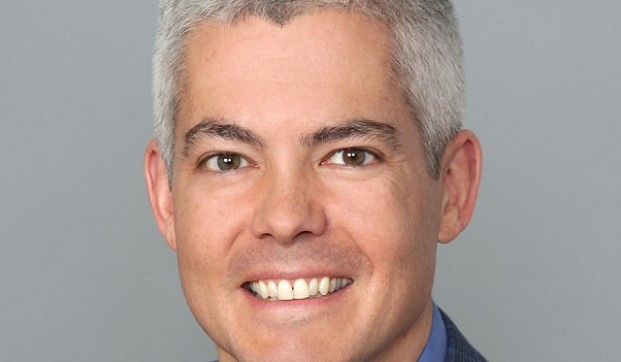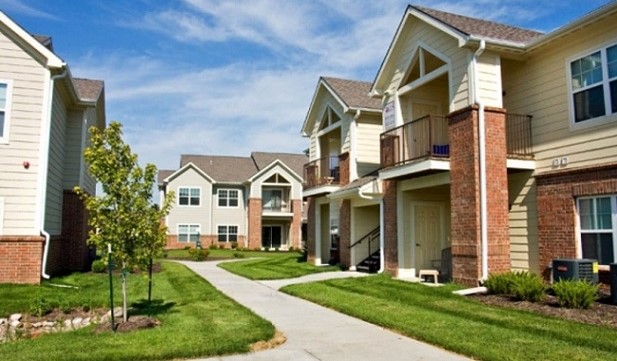
CHICAGO—Homeownership levels have been at historic lows for years, and that has greatly benefitted the owners of multifamily apartments. But the overall strength of the sector, one of the healthiest in commercial real estate, doesn't mean owner/operators can be complacent. Each market has its own dynamic that requires a specific set of strategies, and tenants are always on the lookout for innovation.
GlobeSt.com sat down to talk about the current state and future prospects of the region's multifamily market with Jay Madary, president and chief executive officer of JVM Realty Corp., an Oak Brook, IL-based owner and operator of class A and B garden-style and mid-rise apartment communities in secondary and tertiary markets in the greater Midwest. The company's portfolio consists of communities in suburban Chicago; Cleveland; Indianapolis; Kansas City; and Tulsa, OK.
We're now deep into the second quarter, and there have been a lot of reports about the apartment sector's slight softening and the reduced appetite of lenders for new construction. How are the Midwest markets in which JVM operates doing so far in 2017?
Madary: Multifamily real estate is a cyclical business. The apartment sector has experienced an incredible run over the past half-decade or so, but things can't continue going up forever.
Still, we remain very optimistic about the markets in which we own and operate communities. Occupancy rates may have dipped slightly in this submarket or that, but supply and demand remain in balance, generally speaking. Job growth is strong, and rents are affordable for residents. We believe the pieces are in place for steady rent growth, unlike some primary, coastal markets where apartments may soon be priced out of the vast majority of people's reach.
We like to say that the Midwest apartment market reflects Midwest residents: it's steady and reliable. We certainly don't see a dramatic downturn on the horizon.
JVM doesn't develop communities, so the reduced appetite of lenders for new construction doesn't affect you. But how would you describe the availability of capital for acquisitions these days?
Madary: Equity remains plentiful for acquisitions because investors see that multifamily is still a very exciting investment opportunity and one that offers returns not found elsewhere. Simply put, it remains the best commercial real estate sector to be invested in as a hedge against inflation and rising interest rates because the stage is set – particularly in areas like the Midwest – for continued rent growth and healthy net operating incomes, which lead to strong returns.

JVM has recently announced a series of community renovations in Kansas City, Cleveland and suburban Chicago. What were the market dynamics in each of those areas that compelled you to undertake these upgrades?
Madary: In suburban Kansas City, where we're currently renovating three communities – Eastland Trails in Independence, MO, Clear Creek in Overland Park, KS, and New Longview in Lee's Summit, MO – a lot of new multifamily development has come online recently.
These upgrades will keep our properties extremely competitive with that new product by giving them the look and feel of new construction, better positioning us to drive community performance and optimize return for our investors.
In suburban Cleveland, the opposite dynamic is in place. There has been relatively little new apartment development there. Therefore, our strategic renovations will allow the four communities we're improving – Royal Oaks in North Royalton, Dover Farms in North Royalton, Butternut Ridge in North Olmsted and Hidden Lake in Stow – to really stand out amidst aging housing stock.
Similarly, our upgrades to Aventine at Oakhurst North in Aurora, IL., will give the community a competitive advantage in a submarket that has not experienced much new construction recently.
In addition to the renovations, JVM also recently announced the results of various sustainability initiatives. Generally speaking, to what extent has the multifamily sector embraced sustainability, and do you see the industry's commitment to it deepening in the future?
Madary: I think the multifamily industry has come a long way in adopting and embracing sustainability. More and more owners and operators have realized their responsibility to do the best they can to operate in a sustainable manner with the resources they have.
Not only are sustainable initiatives the right thing to do, residents – particularly millennials and members of Generation Z – are increasingly demanding them. Millennials and Gen Z'ers want to know their apartment communities are operating responsibly and aren't taking an unnecessary toll on the environment.
More specifically, what environmental initiatives has JVM launched in recent years, and how have those programs benefitted the company?
Madary: In recent years, we have conducted a pilot project to reduce the water used for landscape irrigation at three of our communities, and we have also installed LED lighting and energy-efficient windows across portions of our portfolio.
In the pilot project, we installed water-management software that detects leaks in real time, measures soil moisture and monitors the weather to activate the landscape irrigation system only when needed. As a result, we saved eight million gallons of water in 2016 – that's enough to fill 12 Olympic-size swimming pools. With that kind of success, we're currently considering the expansion of the initiative.
We have also replaced more than 2,300 incandescent and fluorescent bulbs in common areas and parking lots with LED bulbs. Consequently, each year we save enough electricity to power the typical American home for more than 42 years.
Additionally, last year we installed energy-efficient windows at two of our communities. In all, more than 3,000 old windows were replaced, and the new windows have led to an estimated 10 to 15 percent decrease in the average resident utility bill.
At JVM, we firmly believe there are few endeavors more important than protecting our environment now and for the future, and we remain committed to exploring new opportunities to decrease our environmental footprint.

CHICAGO—Homeownership levels have been at historic lows for years, and that has greatly benefitted the owners of multifamily apartments. But the overall strength of the sector, one of the healthiest in commercial real estate, doesn't mean owner/operators can be complacent. Each market has its own dynamic that requires a specific set of strategies, and tenants are always on the lookout for innovation.
GlobeSt.com sat down to talk about the current state and future prospects of the region's multifamily market with Jay Madary, president and chief executive officer of JVM Realty Corp., an Oak Brook, IL-based owner and operator of class A and B garden-style and mid-rise apartment communities in secondary and tertiary markets in the greater Midwest. The company's portfolio consists of communities in suburban Chicago; Cleveland; Indianapolis; Kansas City; and Tulsa, OK.
We're now deep into the second quarter, and there have been a lot of reports about the apartment sector's slight softening and the reduced appetite of lenders for new construction. How are the Midwest markets in which JVM operates doing so far in 2017?
Madary: Multifamily real estate is a cyclical business. The apartment sector has experienced an incredible run over the past half-decade or so, but things can't continue going up forever.
Still, we remain very optimistic about the markets in which we own and operate communities. Occupancy rates may have dipped slightly in this submarket or that, but supply and demand remain in balance, generally speaking. Job growth is strong, and rents are affordable for residents. We believe the pieces are in place for steady rent growth, unlike some primary, coastal markets where apartments may soon be priced out of the vast majority of people's reach.
We like to say that the Midwest apartment market reflects Midwest residents: it's steady and reliable. We certainly don't see a dramatic downturn on the horizon.
JVM doesn't develop communities, so the reduced appetite of lenders for new construction doesn't affect you. But how would you describe the availability of capital for acquisitions these days?
Madary: Equity remains plentiful for acquisitions because investors see that multifamily is still a very exciting investment opportunity and one that offers returns not found elsewhere. Simply put, it remains the best commercial real estate sector to be invested in as a hedge against inflation and rising interest rates because the stage is set – particularly in areas like the Midwest – for continued rent growth and healthy net operating incomes, which lead to strong returns.

JVM has recently announced a series of community renovations in Kansas City, Cleveland and suburban Chicago. What were the market dynamics in each of those areas that compelled you to undertake these upgrades?
Madary: In suburban Kansas City, where we're currently renovating three communities – Eastland Trails in Independence, MO, Clear Creek in Overland Park, KS, and New Longview in Lee's Summit, MO – a lot of new multifamily development has come online recently.
These upgrades will keep our properties extremely competitive with that new product by giving them the look and feel of new construction, better positioning us to drive community performance and optimize return for our investors.
In suburban Cleveland, the opposite dynamic is in place. There has been relatively little new apartment development there. Therefore, our strategic renovations will allow the four communities we're improving – Royal Oaks in North Royalton, Dover Farms in North Royalton, Butternut Ridge in North Olmsted and Hidden Lake in Stow – to really stand out amidst aging housing stock.
Similarly, our upgrades to Aventine at Oakhurst North in Aurora, IL., will give the community a competitive advantage in a submarket that has not experienced much new construction recently.
In addition to the renovations, JVM also recently announced the results of various sustainability initiatives. Generally speaking, to what extent has the multifamily sector embraced sustainability, and do you see the industry's commitment to it deepening in the future?
Madary: I think the multifamily industry has come a long way in adopting and embracing sustainability. More and more owners and operators have realized their responsibility to do the best they can to operate in a sustainable manner with the resources they have.
Not only are sustainable initiatives the right thing to do, residents – particularly millennials and members of Generation Z – are increasingly demanding them. Millennials and Gen Z'ers want to know their apartment communities are operating responsibly and aren't taking an unnecessary toll on the environment.
More specifically, what environmental initiatives has JVM launched in recent years, and how have those programs benefitted the company?
Madary: In recent years, we have conducted a pilot project to reduce the water used for landscape irrigation at three of our communities, and we have also installed LED lighting and energy-efficient windows across portions of our portfolio.
In the pilot project, we installed water-management software that detects leaks in real time, measures soil moisture and monitors the weather to activate the landscape irrigation system only when needed. As a result, we saved eight million gallons of water in 2016 – that's enough to fill 12 Olympic-size swimming pools. With that kind of success, we're currently considering the expansion of the initiative.
We have also replaced more than 2,300 incandescent and fluorescent bulbs in common areas and parking lots with LED bulbs. Consequently, each year we save enough electricity to power the typical American home for more than 42 years.
Additionally, last year we installed energy-efficient windows at two of our communities. In all, more than 3,000 old windows were replaced, and the new windows have led to an estimated 10 to 15 percent decrease in the average resident utility bill.
At JVM, we firmly believe there are few endeavors more important than protecting our environment now and for the future, and we remain committed to exploring new opportunities to decrease our environmental footprint.
© Touchpoint Markets, All Rights Reserved. Request academic re-use from www.copyright.com. All other uses, submit a request to [email protected]. For more inforrmation visit Asset & Logo Licensing.








